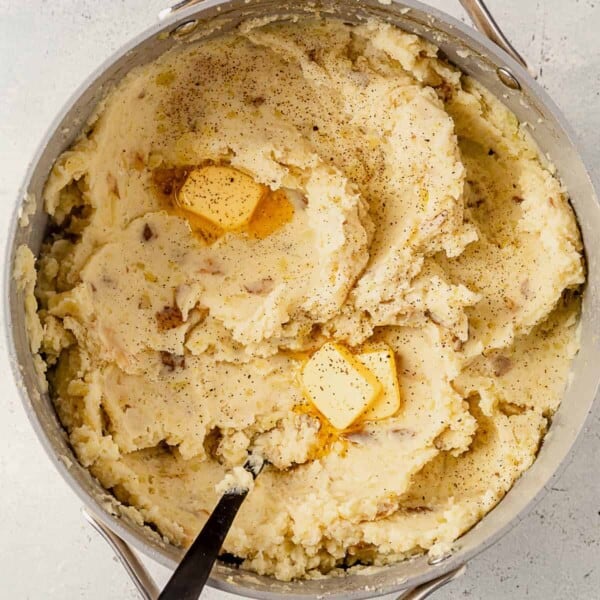Mashed potatoes are one of the best side dishes—it’s why we always make a double batch! Luckily, you can store mashed potatoes in an airtight container in the fridge for up to 4 days and freeze them for up to 4 months.
Meal prep an extra batch of boursin mashed potatoes or store leftovers with all of these tips—then learn how to use leftover mashed potatoes.
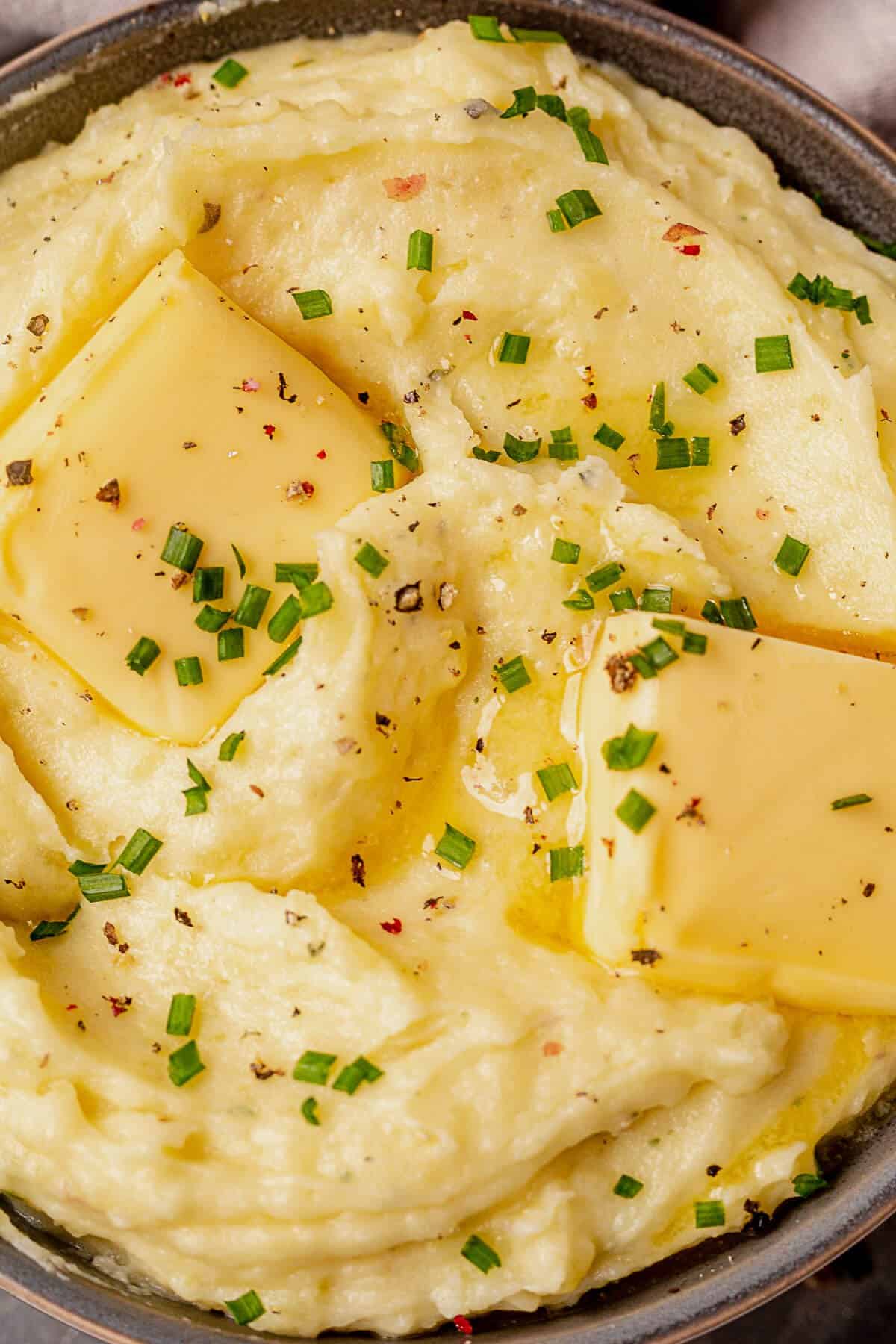
Need another mashed potato recipe? Try crock pot mashed potatoes or dairy-free mashed potatoes.
This simple, creamy, and versatile comfort food pairs with so many delicious meals and is a staple at Thanksgiving dinner. If you have leftover mashed potatoes, keep reading for the best way to keep them fresh and safe for eating. We also cover food safety with your leftover mashed potatoes.
Leftover Mashed Potatoes are Perfect to Repurpose
Some people can find leftovers tiring because they don’t like eating the “same thing” too many meals in a row. However, there are two really great things about leftover mashed potatoes.
- They are a delicious side dish that pairs with so many main courses and entrees.
- There are SO many ways to repurpose your leftover mashed potatoes into main dishes like shepard’s pie, potato pancakes, potato casserole, and more.
How Long Do Mashed Potatoes Last in the Fridge?
Properly store mashed potatoes will stay fresh in an airtight container in the fridge for 3-4 days and up to 4 months in the freezer.
How to Refrigerate Leftover Mashed Potatoes
Make sure to cool them completely and store them in an airtight storage container (these are my favorite). An airtight container will keep the moisture inside the container and keep the potatoes from drying out. Leftover mashed potatoes will last 3-4 days in your refrigerator.
How to Freeze Them
Freeze mashed potatoes in an freezer-safe container. You can also transfer them to a freezer bag and seal tightly. You can double up the bag to avoid freezer bun and make sure you remove as much air as possible. Frozen leftover mashed potatoes can last up to 4 months in your freezer. Thaw frozen mashed potatoes in the fridge overnight before reheating.
Tip! Freeze individual portions for easy reheating when you need it.
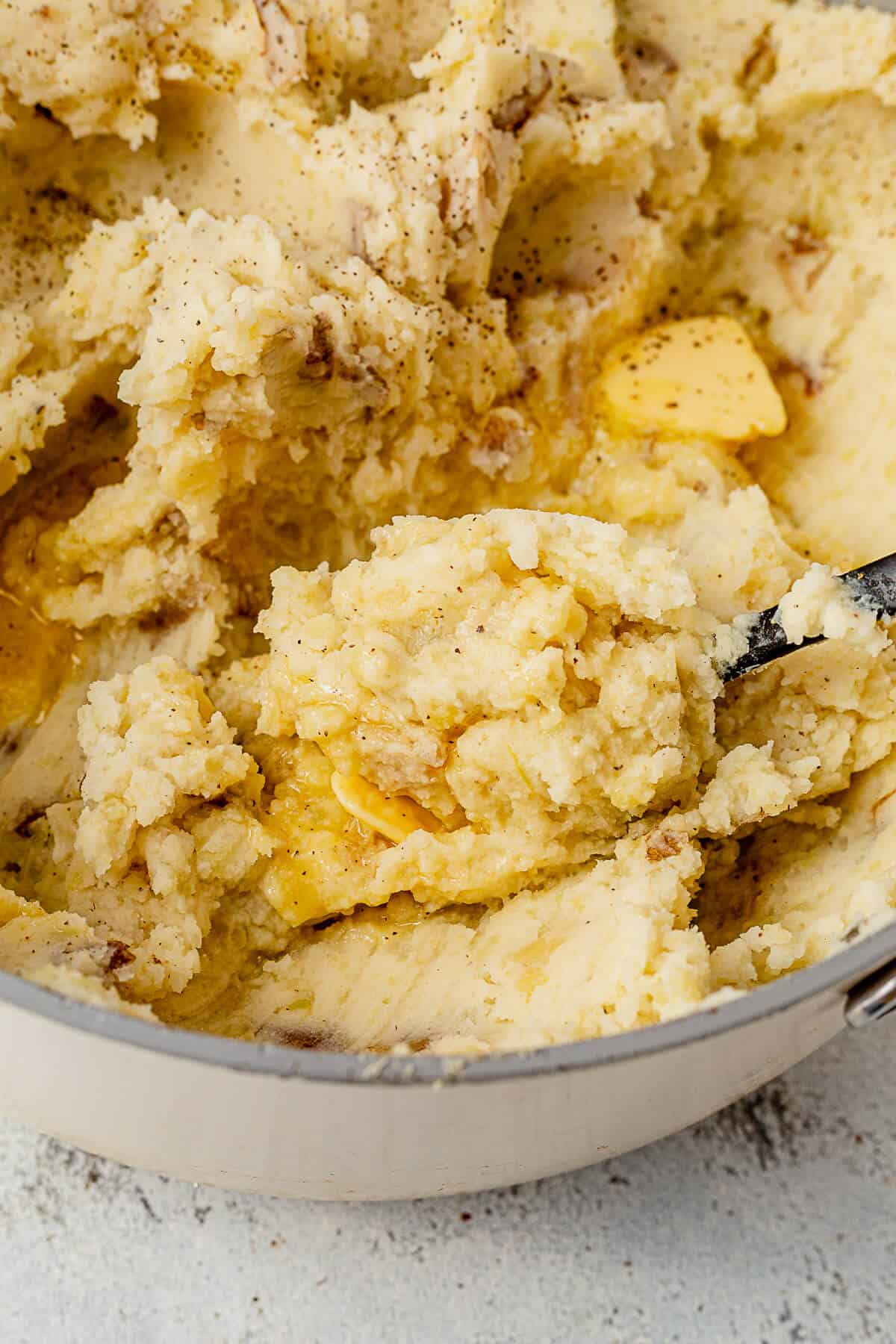
Defrosting or Reheating Leftover Mashed Potatoes
Whether you store your leftover mashed potatoes in your refrigerator or freezer, when it’s time to reheat, make sure to check for signs of spoilage. Freezer burn, an odd smell, or a sour taste from a taste test, is enough reason to throw them away!
If you are getting your leftover mashed potatoes out of the freezer, you can thaw them out in your refrigerator overnight. If you’re on a time crunch, soak your container or freezer bag in a bowl of hot water. Once they become pliable, you can reheat them! To reheat, you can use your microwave or stovetop.
To use your microwave, make sure to warm them in short bursts and stir in between (roughly 1-2 minute cycles). The outer mashed potatoes will become warmer than the inside and you want to mix all of the warm spots together.
To use your stovetop, reheat using medium heat. Using your stovetop may increase moisture loss, though, so you may need to add some liquid to keep them their creaminess. Depending on your personal preference, you can add a little chicken broth or cream cheese to thin them out. We recommend 1/2 cup of chosen liquid to every 4 cups of mashed potatoes.
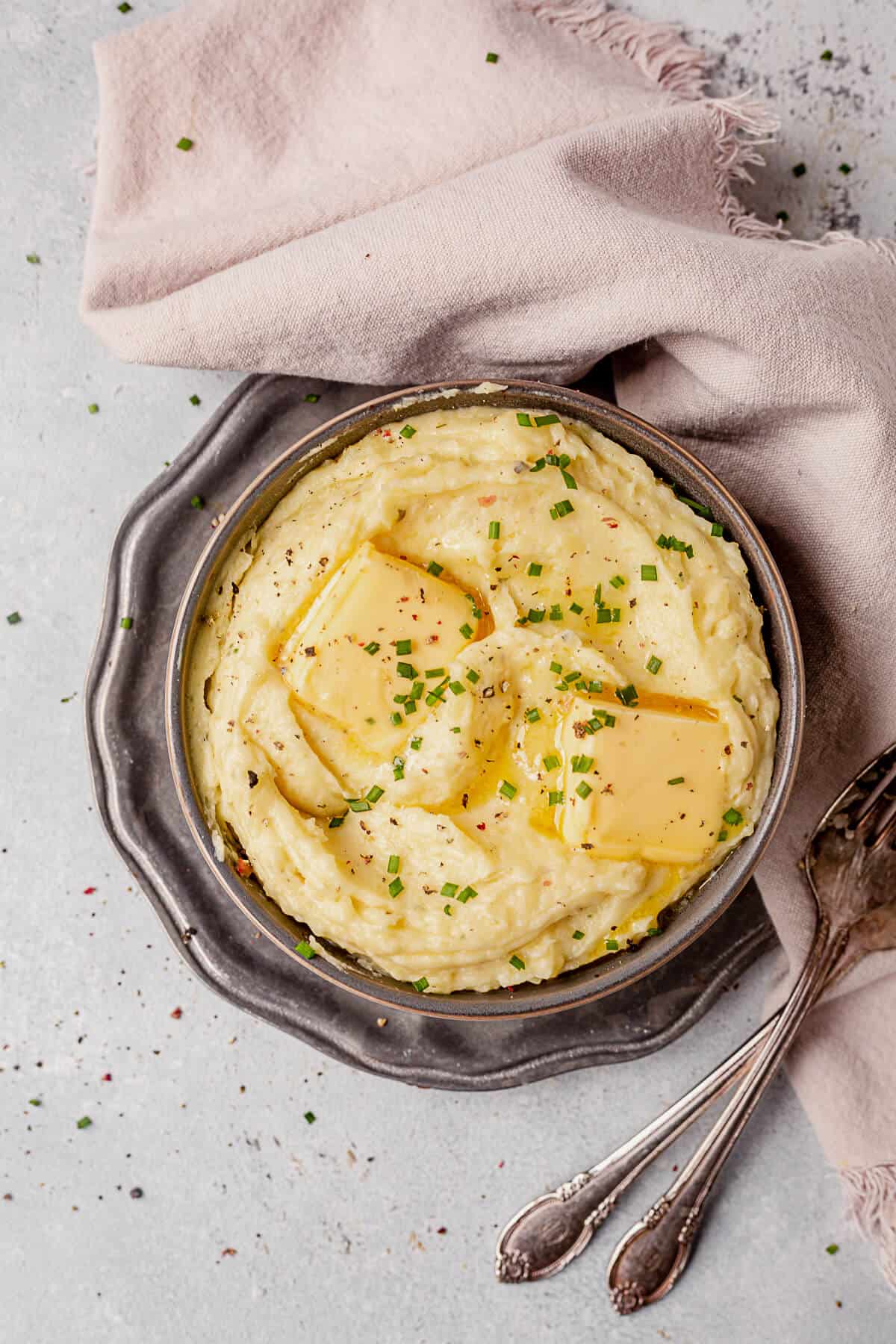
Storing Different Cooking Methods
Whether you make your mashed potatoes in a slow cooker, Instant Pot, or on the stove top using fresh potatoes or instant potatoes, storing methods are all the same!
Even though boxed and instant have a longer shelf life with their preservatives, once they’re prepared, they have the same longevity as making using fresh potatoes.
All cooked potatoes should be treated the same when it comes to storing no matter how they started!
Do They Spoil Faster with Dairy?
Since most mashed potatoes contain milk and butter, their shelf life is much shorter when compared to those mashed potatoes that don’t have dairy products.
Recipes that contain dairy do spoil quicker, which is why we really love with these dairy-free mashed potatoes.
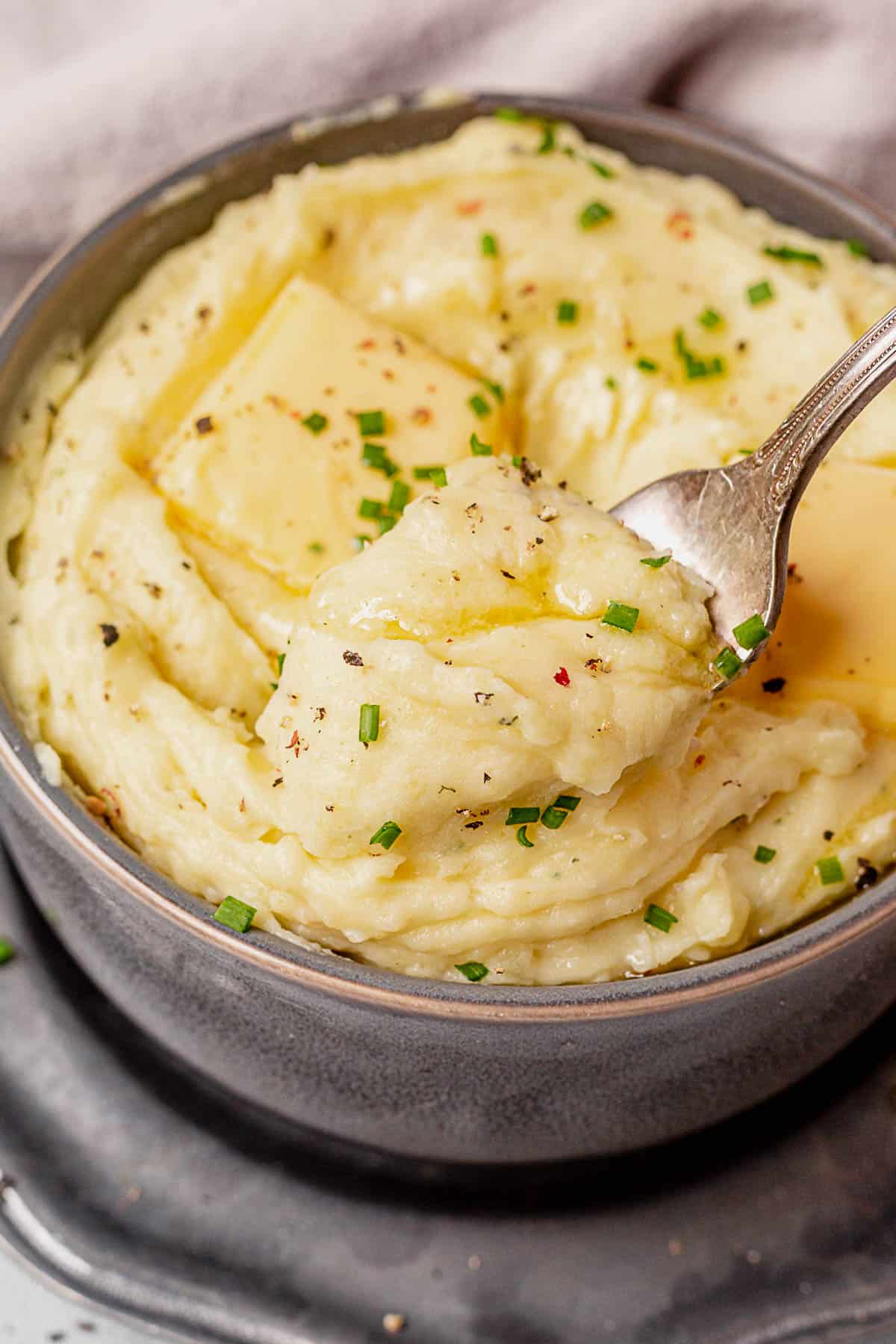
How Do I Tell If My Mashed Potatoes Have Gone Bad?
Here are some signs of spoilage are easier to recognize than others!
- Look for moldy patches. Moldy patches and spots will be the most obvious indicator. If your airtight container fails and moisture or air get in, the container will become a breeding ground for harmful bacteria.
- Smell them. Starchy foods should not have a strong smell. If your potato leftovers don’t smell good or smell sour, throw them away.
- Taste test. While a taste test is a braver way to tell, it’s also a foolproof way! If they have a sour flavor or sour taste, throw them away.
- Discoloration. You know what color mashed potatoes should be (white and/or gold). Iff there is any discolored areas, throw them away.
- Moisture loss. Another way to check if your mashed potatoes have gone bad is that they have become too dry and crumbly. While your leftover potatoes may dry out a bit when you reheat them, if they are falling apart before reheating, consider throwing them away. While some moisture loss is expected, too much moisture loss is bad.
- Glossy patches. Glossy patches are another sign they’ve gone bad.
- Been left out too long. They should be stored within a few hours of cooking as they will experience bacteria growth. If they are left at room temperature for too long, they become unsafe to eat.
If they show any of these signs of spoilage, throw them away. You do not want to get food poisoning from eating bad leftovers!
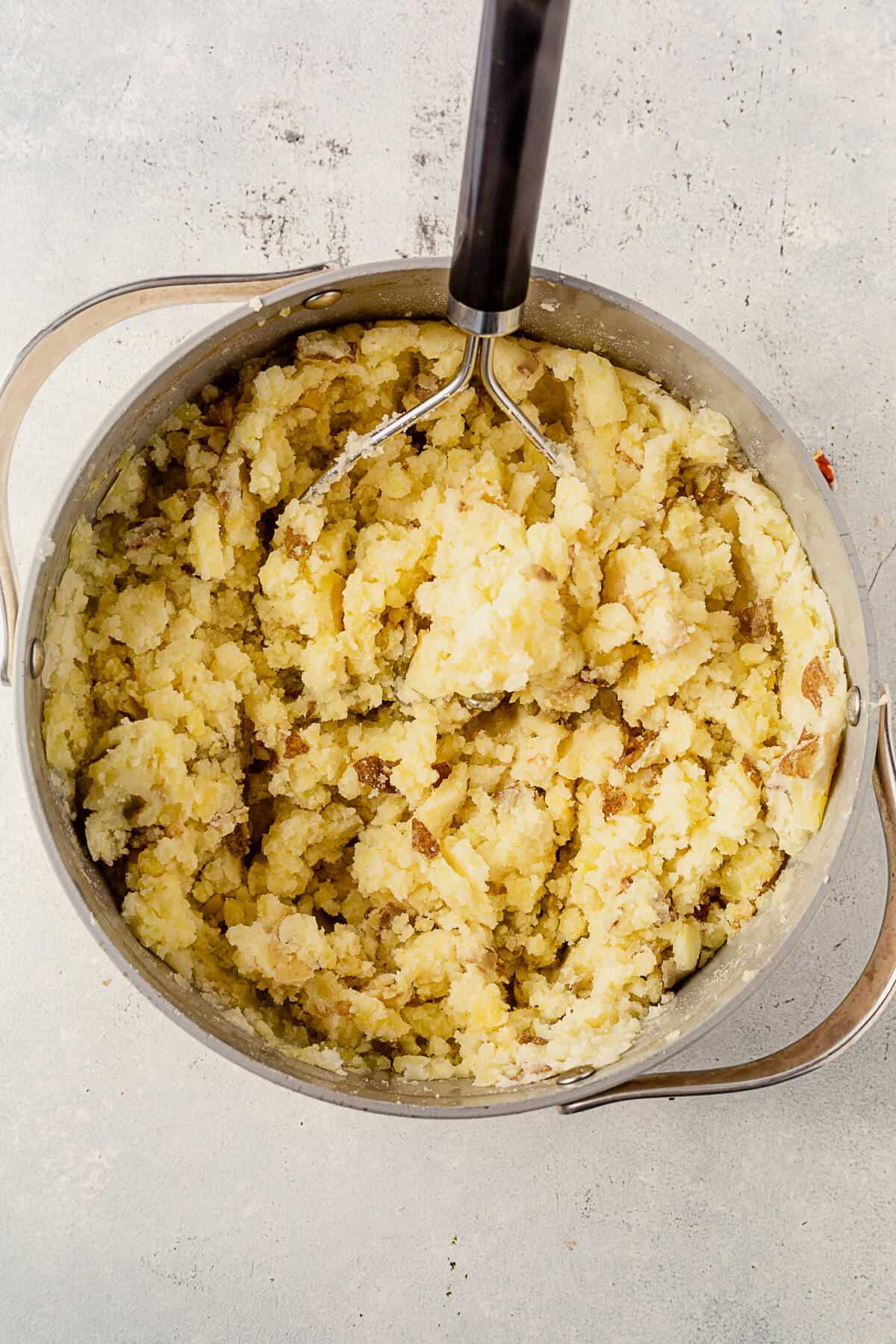
Frequently Asked Questions
No, boiled potatoes should not stay out longer than two hours to ensure the best quality. If you plan to store the potatoes as leftovers, this should be done within the first 2 hours after cooking. Do not leave them out at room temperature.
Your leftover mashed potatoes become a breeding ground for harmful bacteria after just hours of cooking so it’s not a good idea to leave them sitting out for longer than meal time. This bacteria growth makes the potatoes go bad quicker. Cold temperatures (like the ones in your refrigerator or freezer!) stop the rapid growth of bacteria. This is why it is so important to get your leftover mashed potatoes into a sealed container and in a fridge or freezer as fast as possible.
Recipes with dairy will spoil even faster than recipes that don’t. It’s important to be even more cautious with storing your leftover mashed potatoes and monitoring them for signs of spoilage if your recipe contains dairy.
Recipes to Repurpose Mashed Potatoes
If you have leftovers, we highly recommend pairing them with a heart entrée, like this gluten-free turkey meatloaf or this air fryer turkey breast. Add in our gluten-free cornbread stuffing and top it all with our gluten-free gravy.
If you’re looking for something even heartier, our Instant Pot pot roast would pair perfectly with leftover potatoes. The recipe uses roasted potatoes but mashed potatoes make this meal just as delicious! We like to think of it as an easy Shepherd’s Pie.
Potato Pancakes: Another option is potato pancakes (also known as potato patties)! This is an easy ways to repurpose your leftover potatoes. Simply add some olive oil to a frying pan and heat it up. While the oil is heating, using an ice cream scoop (or your hands), scoop some of the leftover mashed potatoes and flatten it into a little pancake. Place them into the frying pan and let them fry. Top with a little sour cream for this perfectly repurposed side dish.
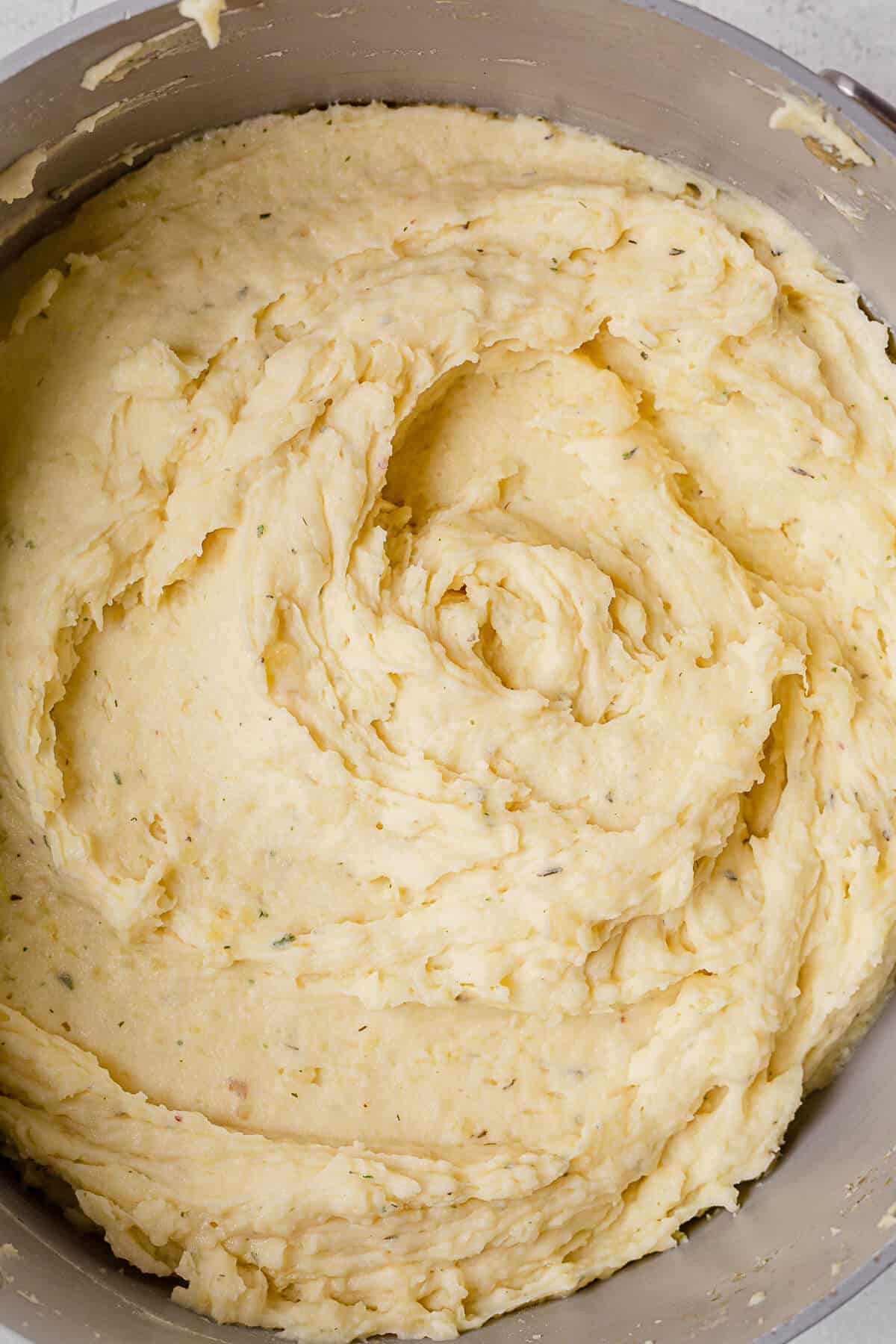
Leftover Mashed Potato Main Dishes
If you are ready to give your potato leftovers main character energy, then check out a few of these options.
One of the more creative ways to repurpose your leftover mashed potatoes is to make them into gnocchi. While this method may take a little more time and effort, especially if it’s your first time, the end result is worth it.
Check out our tutorial on how to make gnocchi. While this recipe uses sweet potatoes, you can use your leftover mashed potatoes instead. You may need to thicken them up, though, before adding the flour to them.
If that’s the case, check out how to thicken mashed potatoes. For best results, add your gnocchi to this creamy chicken gnocchi soup!
Another great way to repurpose is in a potato soup. Mashed potatoes will give the soup a thicker texture, it will not affect the flavor! Try using them in this Instant Pot corn chowder or this Whole 30 Zuppa Toscana.
This post may contain affiliate links. Read our disclosure policy.

